Creating a Virtual Test Bed Using a Dynamic Engine Model with Integrated Controls to Support in-the-Loop Hardware and Software Optimization and Calibration
Abstract
:1. Introduction
2. Engine Characteristics and Operating Points
3. Simulation Model Description
3.1. Predictive Combustion Model
- Entrainment Rate (ERM);
- Ignition Delay (IDM);
- Premixed Combustion Rate (PCRM); and
- Diffusion Combustion Rate (DCR).
3.2. Engine-Out NOx Model
- a multiplier for the predicted net rate of NOx formation; and
- a multiplier for the activation energy of the N2 oxidation rate equation.
3.3. Airpath Control Model
- a boost pressure governor;
- an exhaust pressure—steady governor;
- an exhaust pressure—transient governor; and
- a turbine speed governor.
- desired mass flow through the EGR valve;
- pressure before EGR valve;
- pressure after EGR valve; and
- temperature before EGR valve.
3.4. ECU and GT-Suite Coupling
4. Results and Discussion
4.1. Steady State Simulation
4.2. Transient Operation Simulation
4.3. WHTC Simulation
4.4. Thermal Insulation Analysis
5. Conclusions and Future Work
Author Contributions
Funding
Acknowledgments
Conflicts of Interest
Definitions and Abbreviations
| Aftertreatment System | ATS |
| Brake Mean Effective Pressure | BMEP |
| Brake Specific Fuel Consumption | BSFC |
| Computational Fluid Dynamics | CFD |
| Design of Experiment | DoE |
| Diesel Oxidation Catalyst | DOC |
| Diffusion Combustion Rate Multiplier | DCRM |
| Electronic Control Unit | ECU |
| Entrainment Rate Multiplier | ERM |
| European Union | EU |
| Exhaust Gas Recirculation | EGR |
| Genetic Algorithm | GA |
| Ignition Delay Multiplier | IDM |
| Internal Combustion Engine | ICE |
| Original Equipment Manufacturers | OEMs |
| Premixed Combustion Rate Multiplier | PCRM |
| Proportional, Integral and Derivative | PID |
| Real Driving Emission | RDE |
| Root Mean Squared | RMS |
| Selective Catalytic Reduction | SCR |
| Software in the Loop | SiL |
| Start of Injection | SoI |
| Variable Geometry Turbocharger | VGT |
| Variable Valve Actuation | VVA |
| World Harmonized Transient Cycle | WHTC |
References
- Johnson, T. Diesel emissions in review. SAE Int. J. Engines 2011, 4, 143–157. [Google Scholar] [CrossRef]
- Yamashita, A.; Ohki, H.; Tomoda, T.; Nakatani, K. Development of Low Pressure Loop EGR System for Diesel Engines; SAE Technical Paper 2011-01-1413; SAE International: Warrendale, PA, USA, 2011. [Google Scholar]
- Dittrich, P.; Peter, F.; Huber, G.; Kuehn, M. Thermodynamic Potentials of a Fully Variable Valve Actuation System for Passenger-Car Diesel Engines; SAE Technical Paper 2010-01-1199; SAE International: Warrendale, PA, USA, 2010. [Google Scholar]
- Piano, A.; Millo, F.; di Nunno, D.; Gallone, A. Numerical Assessment of the CO2 Reduction Potential of Variable Valve Actuation on a Light Duty Diesel Engine; SAE Technical Paper 2018-37-0006; SAE International: Warrendale, PA, USA, 2018. [Google Scholar]
- Burke, R.; Liu, Y.; Vijayakumar, R.; Werner, J.; Dalby, J. Inner-Insulated Turbocharger Technology to Reduce Emissions and Fuel Consumption from Modern Engines; SAE Technical Paper 2019-24-0184; SAE International: Warrendale, PA, USA, 2019. [Google Scholar]
- Pillai, S.; LoRusso, J.; van Benschoten, M. Analytical and Experimental Evaluation of Cylinder Deactivation on a Diesel Engine; SAE Technical Paper 2015-01-2809; SAE International: Warrendale, PA, USA, 2015. [Google Scholar]
- Millo, F.; Piano, A.; Paradisi, B.P.; Boccardo, G.; Mirzaeian, M.; Arnone, L.; Manelli, S. The Effect of Post Injection Coupled with Extremely High Injection Pressure on Combustion Process and Emission Formation in an Off-Road Diesel Engine: A Numerical and Experimental Investigation; SAE Technical Paper 2019-24-0092; SAE International: Warrendale, PA, USA, 2019. [Google Scholar]
- Rafigh, M. Exhaust Aftertreatment Modeling for Efficient Calibration in Diesel Passenger Car Applications. Ph.D. Thesis, Politecnico di Torino, Torino, Italy, 2017. [Google Scholar]
- Pfahl, U.; Schatz, A.; Konieczny, R. Advanced Exhaust Gas Thermal Management for Lowest Tailpipe Emissions-Combining Low Emission Engine and Electrically Heated Catalyst; SAE Technical Paper 2012-01-1090; SAE International: Warrendale, PA, USA, 2012. [Google Scholar]
- Cloudt, R.; Willems, F. Integrated Emission Management strategy for cost-optimal engine-aftertreatment operation. SAE Int. J. Engines 2011, 4, 1784–1797. [Google Scholar] [CrossRef]
- Domeit, P.A.; Lang, O.; Schulz, R.; Weng, V. CFD Simulation of Diesel Injection and Combustion; SAE Technical Paper 2002-01-0945; SAE International: Warrendale, PA, USA, 2002. [Google Scholar]
- Zhang, K.; Xin, Q.; Mu, Z.; Niu, Z.; Wang, Z. Numerical simulation of diesel combustion based on n-heptane and toluene. Propuls. Power Res. 2019, 8, 121–127. [Google Scholar] [CrossRef]
- Li, G.; Sapsford, S.; Morgan, R. CFD Simulation of DI Diesel Truck Engine Combustion Using VECTIS.; SAE Technical Paper 2000-01-2940; SAE International: Warrendale, PA, USA, 2000. [Google Scholar]
- Lebas, R.; Mauviot, G.; le Berr, F.; Albrecht, A. A Phenomenological approach to model diesel engine combustion and in-cylinder pollutant emissions adapted to control strategy. IFAC Proc. Vol. 2009, 42, 32–39. [Google Scholar] [CrossRef]
- Payri, F.; Olmeda, P.; Martín, J.; García, A. A complete 0D thermodynamic predictive model for direct injection diesel engines. Appl. Energy 2011, 88, 4632–4641. [Google Scholar] [CrossRef]
- Gamma Technologies. GT-SUITE Engine Performance Application Manual; Gamma Technologies: Belgrad, Serbia, 2019. [Google Scholar]
- Piano, A.; Millo, F.; Boccardo, G.; Rafigh, M. Assessment of the Predictive Capabilities of a Combustion Model for a Modern Common Rail Automotive Diesel Engine; SAE International: Warrendale, PA, USA, 2016. [Google Scholar]
- Heywood, J. Internal Combustion Engines Fundamentals; Mcgraw-Hill International: New York, NY, USA, 1953; Volume 11.2. [Google Scholar]
- Gelso, E.R.; Dahl, J. Diesel engine control with exhaust aftertreatment constraints. IFAC-PapersOnLine 2017, 50, 8921–8926. [Google Scholar] [CrossRef]
- Martin, J.; Arnau, F.; Piqueras, P.; Auñon, A. Development of an Integrated Virtual Engine Model to Simulate New Standard Testing Cycles; SAE Technical Paper 2018-01-1413; SAE International: Warrendale, PA, USA, 2018. [Google Scholar]
- Baines, N.; Wygant, K.; Dris, A. The Analysis of heat transfer in automotive turbochargers. J. Eng. Gas Turb. Powertrans. 2010, 132, 042301. [Google Scholar] [CrossRef]
- Romagnoli, A.; Martinez-Botas, R. Heat Transfer on a Turbocharger Under Constant Load Points. In Proceedings of the 54th ASME Turbo Expo, Orlando, FL, USA, 8–12 June 2009. [Google Scholar]
- Romagnoli, A.; Martinez-Botas, R. Heat transfer analysis in a turbocharger turbine: An experimental and computational evaluation. Appl. Therm. Eng. 2012, 38, 58–77. [Google Scholar] [CrossRef] [Green Version]
- Cormerais, M.; Chesse, P.; Hetet, J.F. Turbocharger heat transfer modeling under steady and transient conditions. Int. J. Thermodyn. 2009, 12, 193–202. [Google Scholar]
- Serrano, J.; Olmeda, P.; Arnau, F.; Reyes-Belmonte, M.; Lefebvre, A. Importance of heat transfer phenomena in small turbochargers for passenger car applications. SAE Int. J. Eng. 2013, 6, 716–728. [Google Scholar] [CrossRef] [Green Version]
- Serrano, J.; Olmeda, P.; Arnau, F.; Dombrovsky, A.; Smith, L. Analysis and methodology to characterize heat transfer phenomena in automotive turbochargers. J. Eng. Gas Turb. Power 2015, 137, 021901. [Google Scholar] [CrossRef]
- Serrano, J.; Olmeda, P.; Arnau, F.; Dombrovsky, A. Turbocharger heat transfer and mechanical losses influence in pre-dicting engines performance by using one-dimensional simulation codes. Energy 2015, 86, 204–218. [Google Scholar] [CrossRef] [Green Version]
- Chen, H.; Hakeem, I.; Martinez-Botas, R.F. Modelling of a Turbocharger Turbine under Pulsating Inlet Conditions. Proceedings of the Institution of Mechanical Engineers, Part A. J. Power Energy 1996, 210, 397–408. [Google Scholar] [CrossRef]
- Aymanns, R.; Scharf, J.; Uhlmann, T.; Lückmann, D. A revision of quasi steady modelling of turbocharger turbines in the simulation of pulse charged engines. Motortechnisch. Z. 2012, 55, 149–163. [Google Scholar]
- Millo, F.; Pautasso, E.; Delneri, D.; Troberg, M. A DoE Analysis on the Effects of Compression Ratio, Injection Tim-ing, Injector Nozzle Hole Size and Number on Performance and Emissions in a Diesel Marine Engine; SAE Technical Paper 2007-01-0670; SAE International: Warrendale, PA, USA, 2007. [Google Scholar]
- Mirzaeian, M.; Millo, F.; Rolando, L. Assessment of the Predictive Capabilities of a Combustion Model for a Modern Downsized Turbocharged SI; SAE Technical Paper 2016-01-0557; SAE International: Warrendale, PA, USA, 2016. [Google Scholar]
- Martin, J.; Serrano, J.; Piqueras, P.B. Diesel, Turbine and exhaust ports thermal insulation impact on the engine efficiency and aftertreatment inlet temperature. Appl. Energy 2019, 240, 409–423. [Google Scholar]
- Serrano, J.; Piqueras, P.; Navarro, R.; Gómez, J.; Marc, M.; Benedicte, T. Modelling Analysis of Aftertreatment Inlet Temperature Depend-ence on Exhaust Valve and Ports Design Parameters; SAE Technical Paper 2016-01-0670; SAE International: Warrendale, PA, USA, 2016. [Google Scholar]
- Viazzi, C.; Deboni, A.; Ferreira, J.Z.; Bonino, J.P.; Ansart, F. Synthesis of Yttria Stabilized Zirconia by sol–gel route: Influence of experimental parameters and large scale production. Solid State Sci. 2006, 8, 1023–1028. [Google Scholar] [CrossRef] [Green Version]



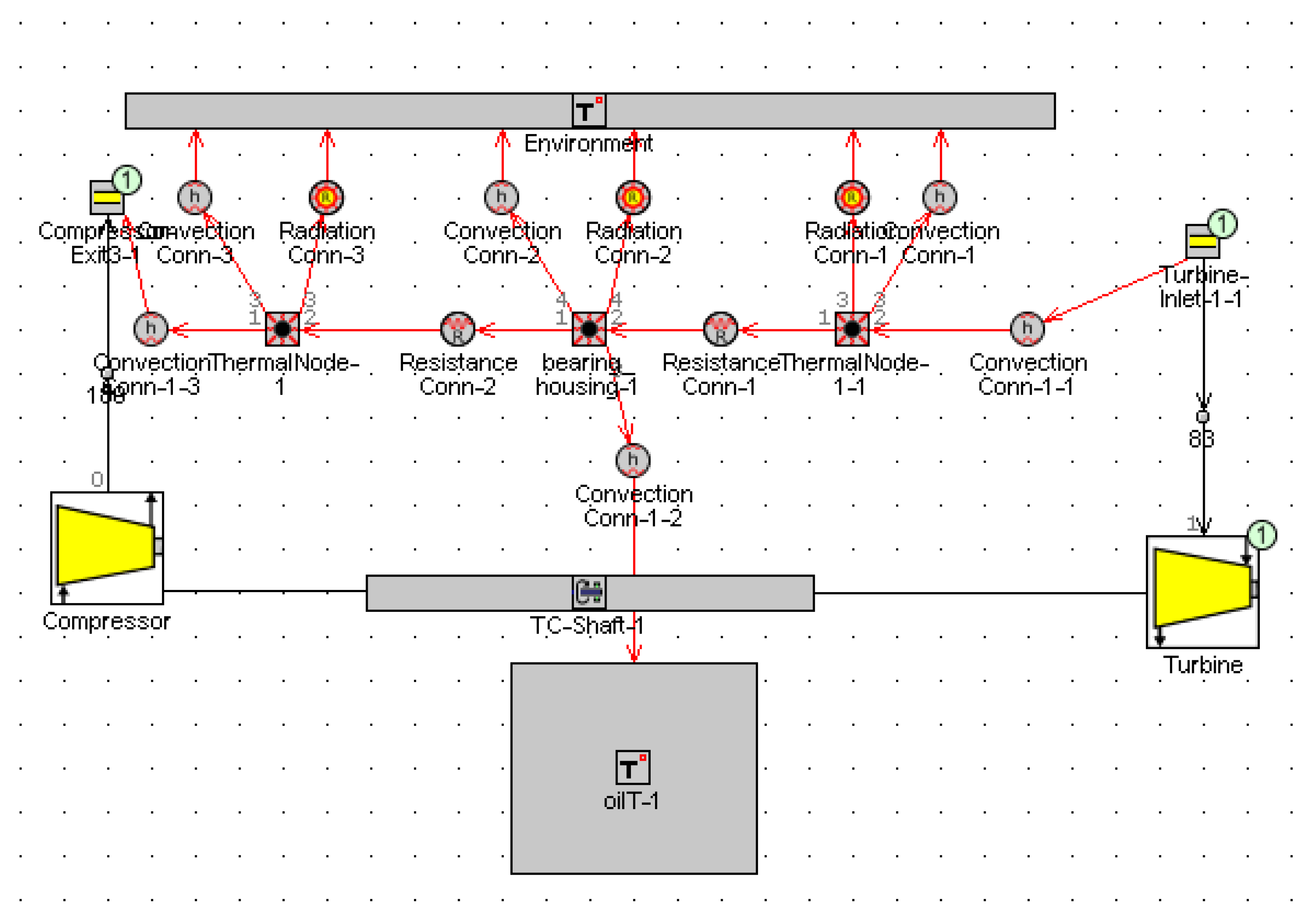
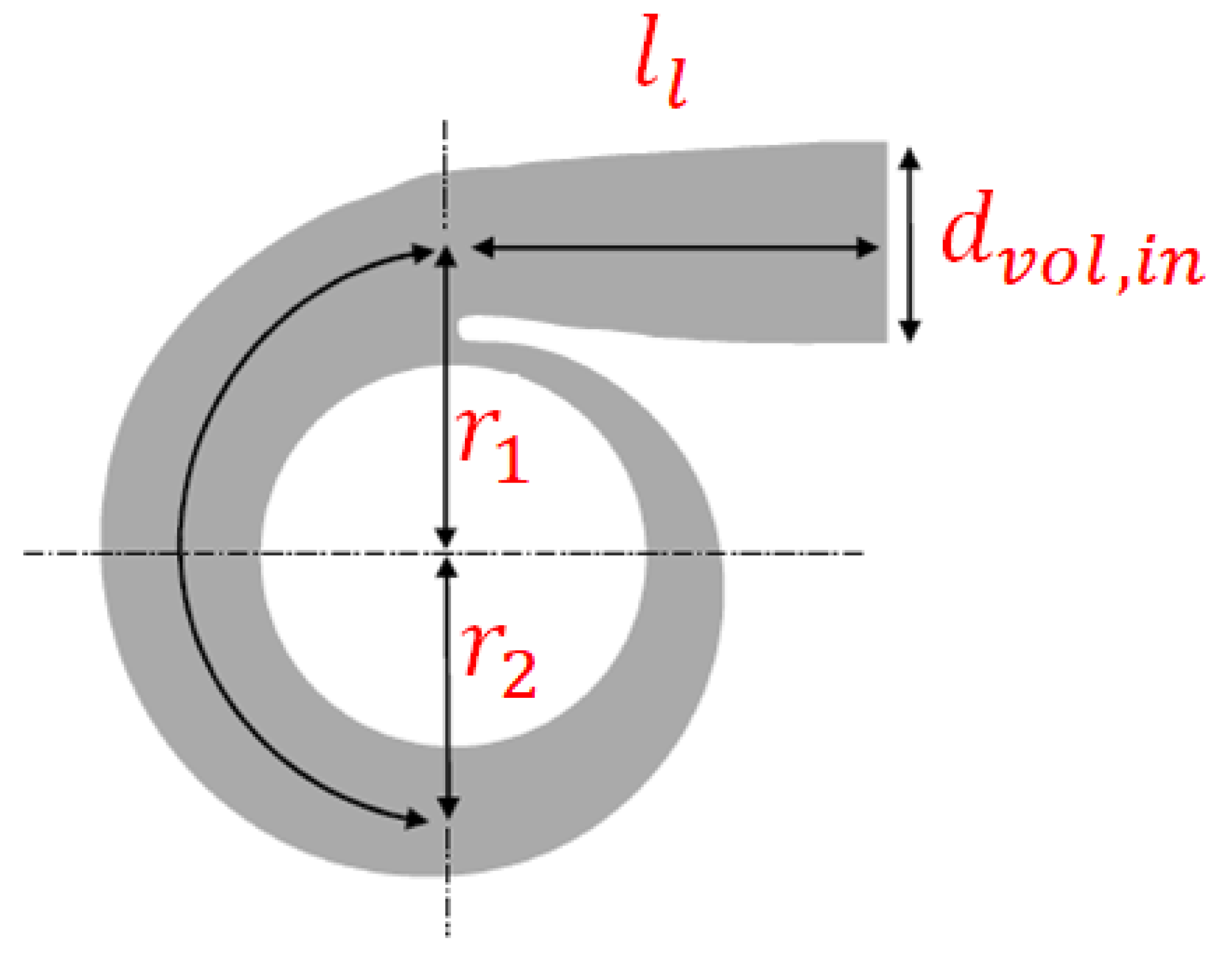
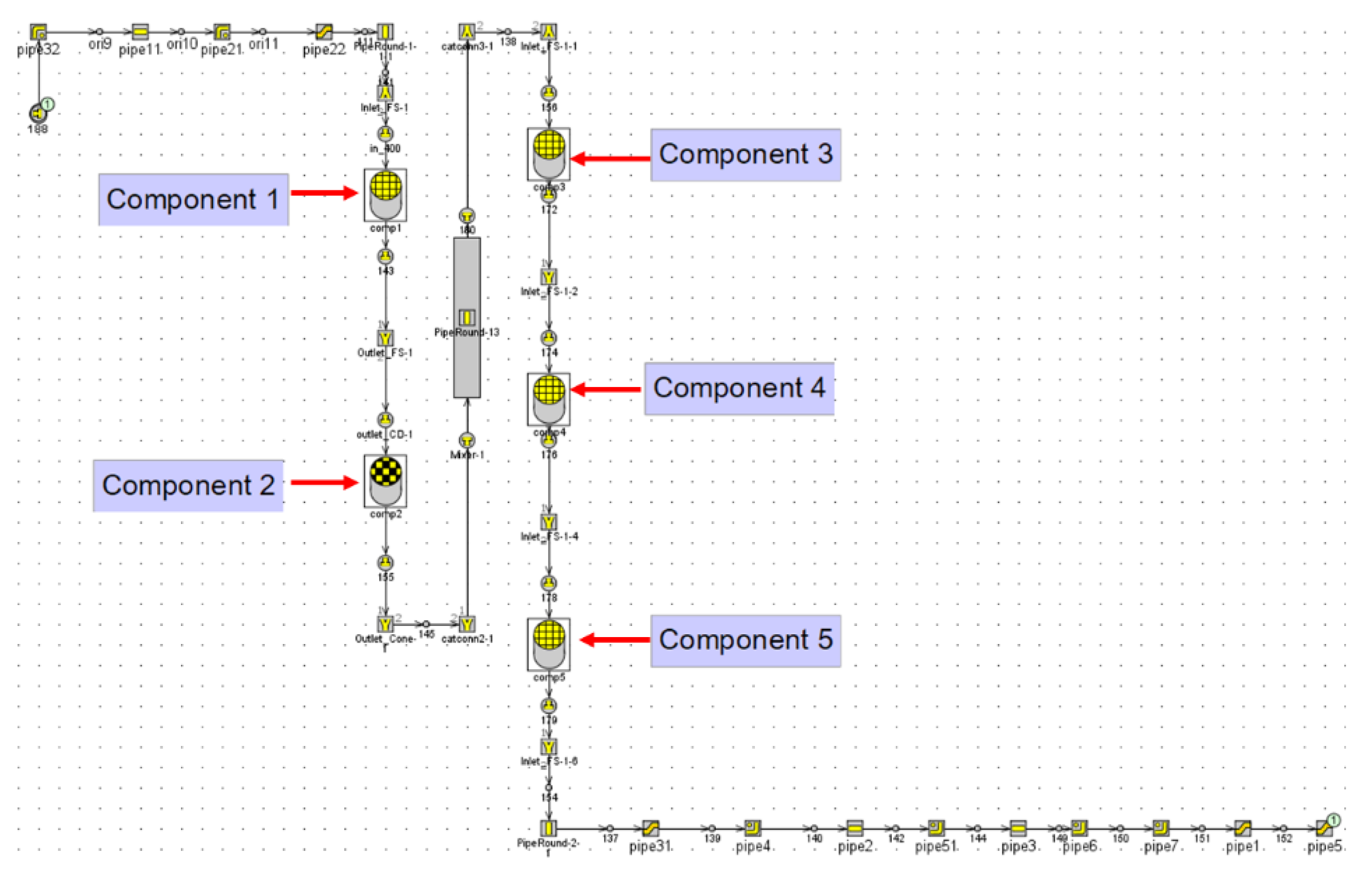

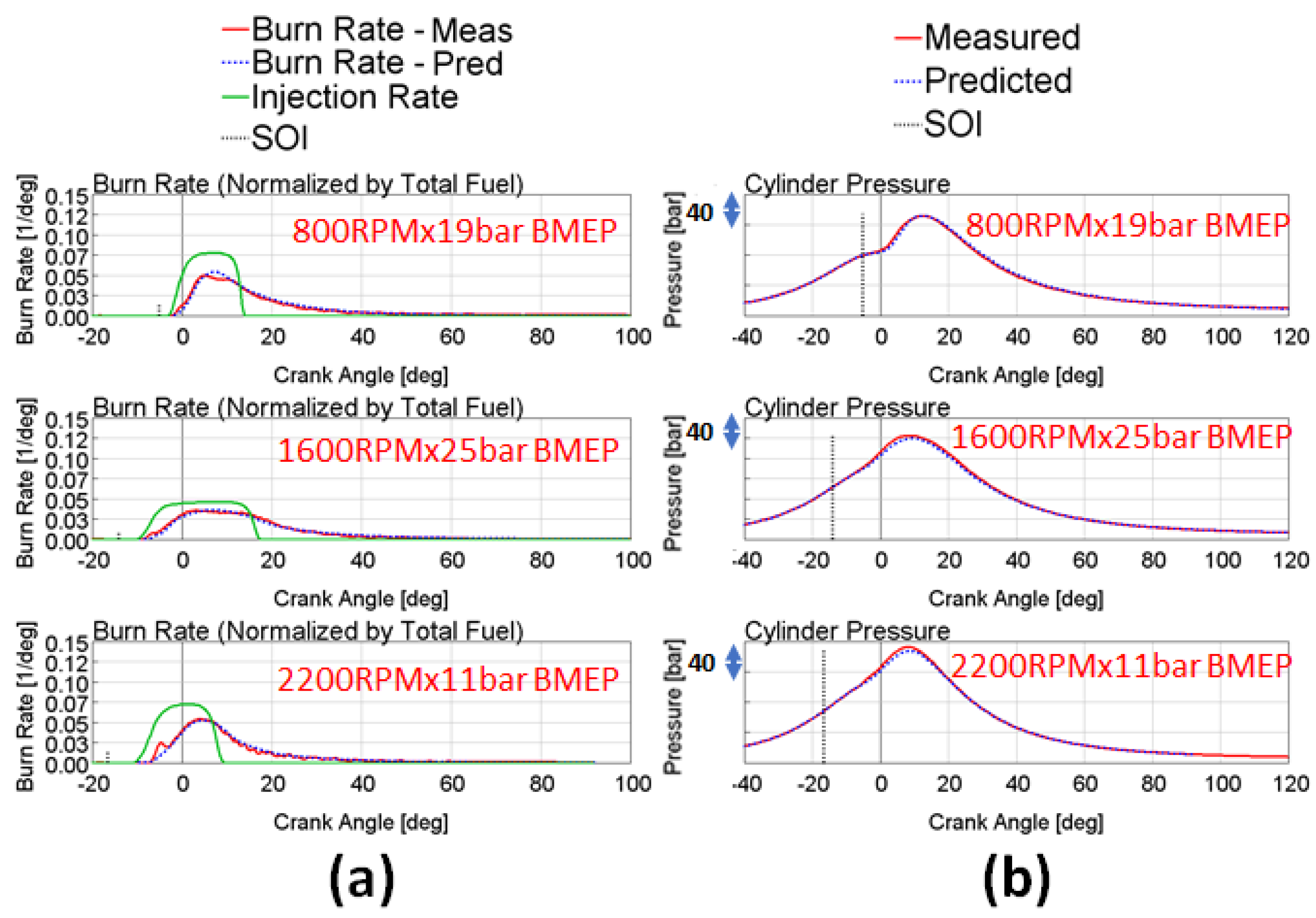
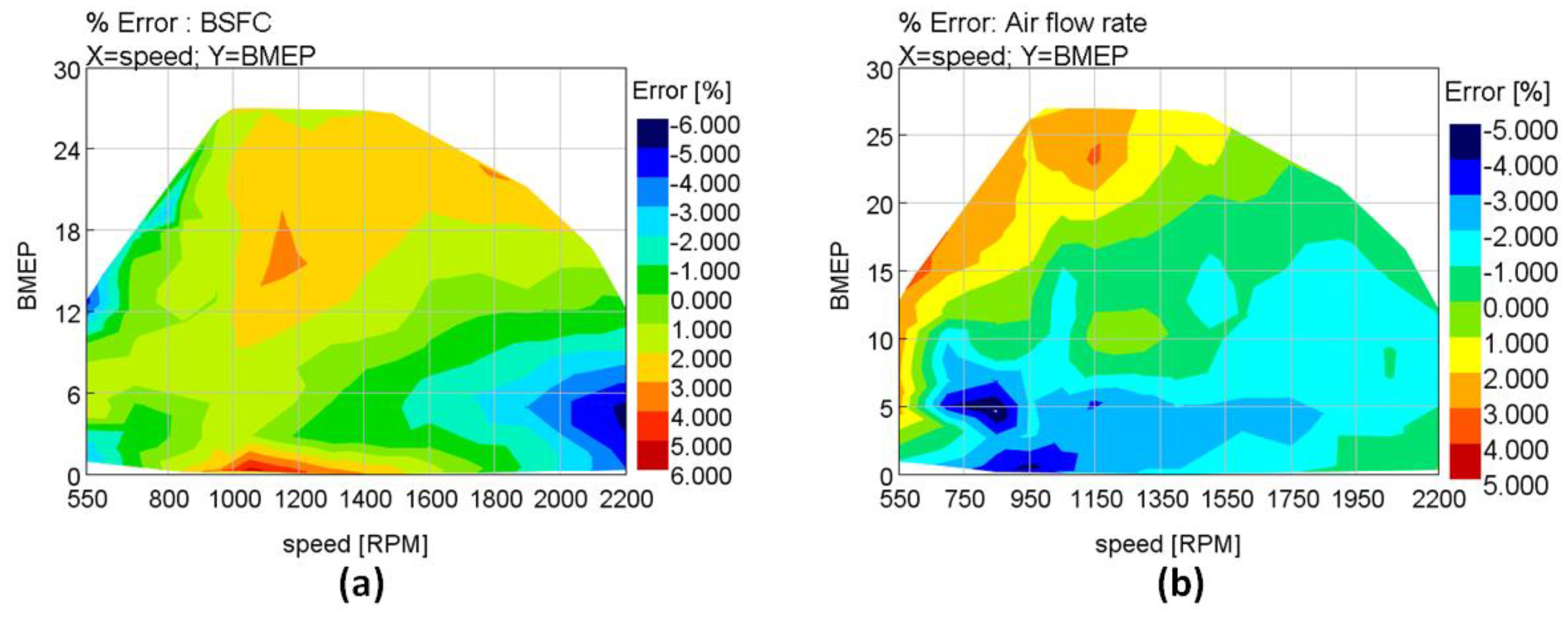
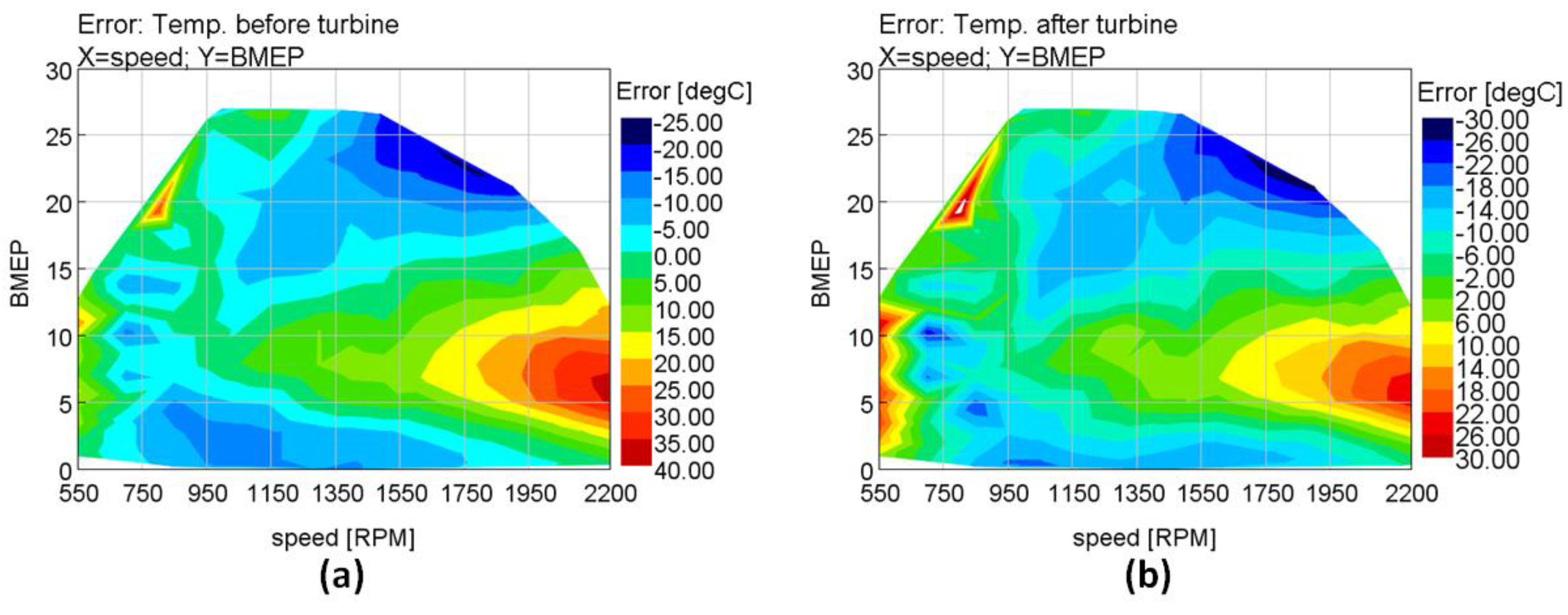
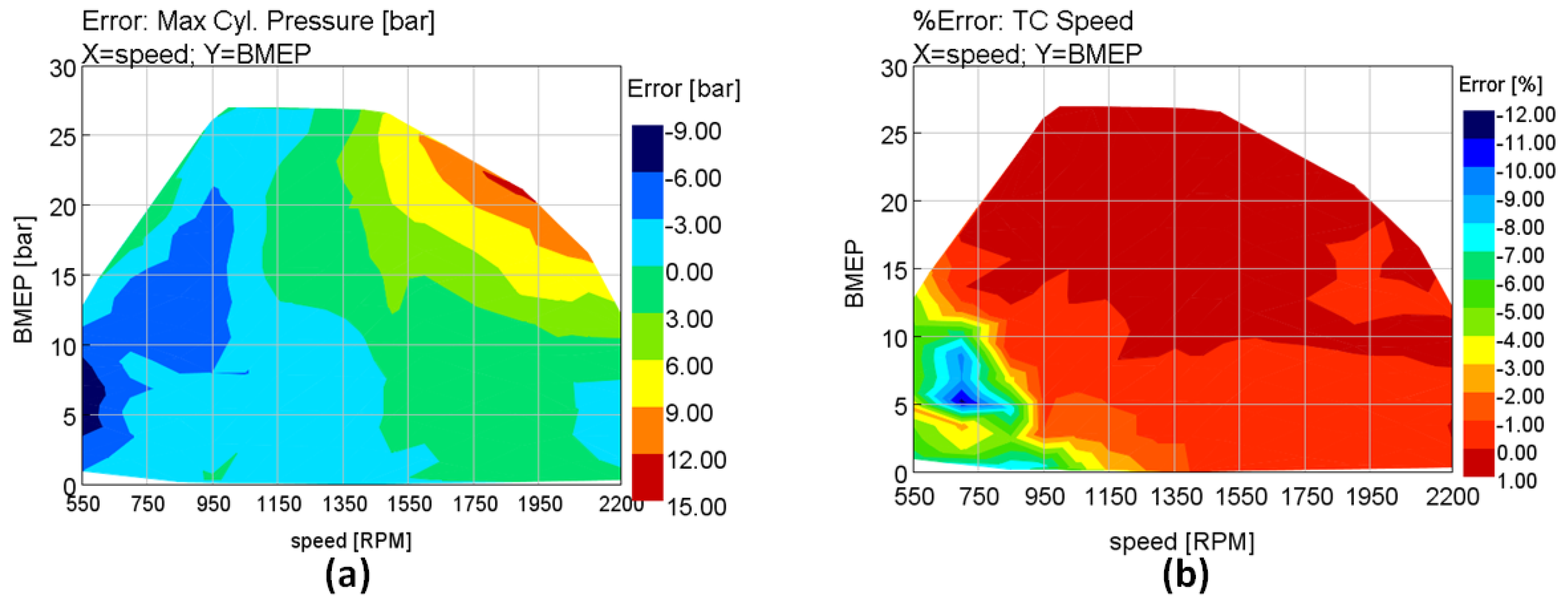
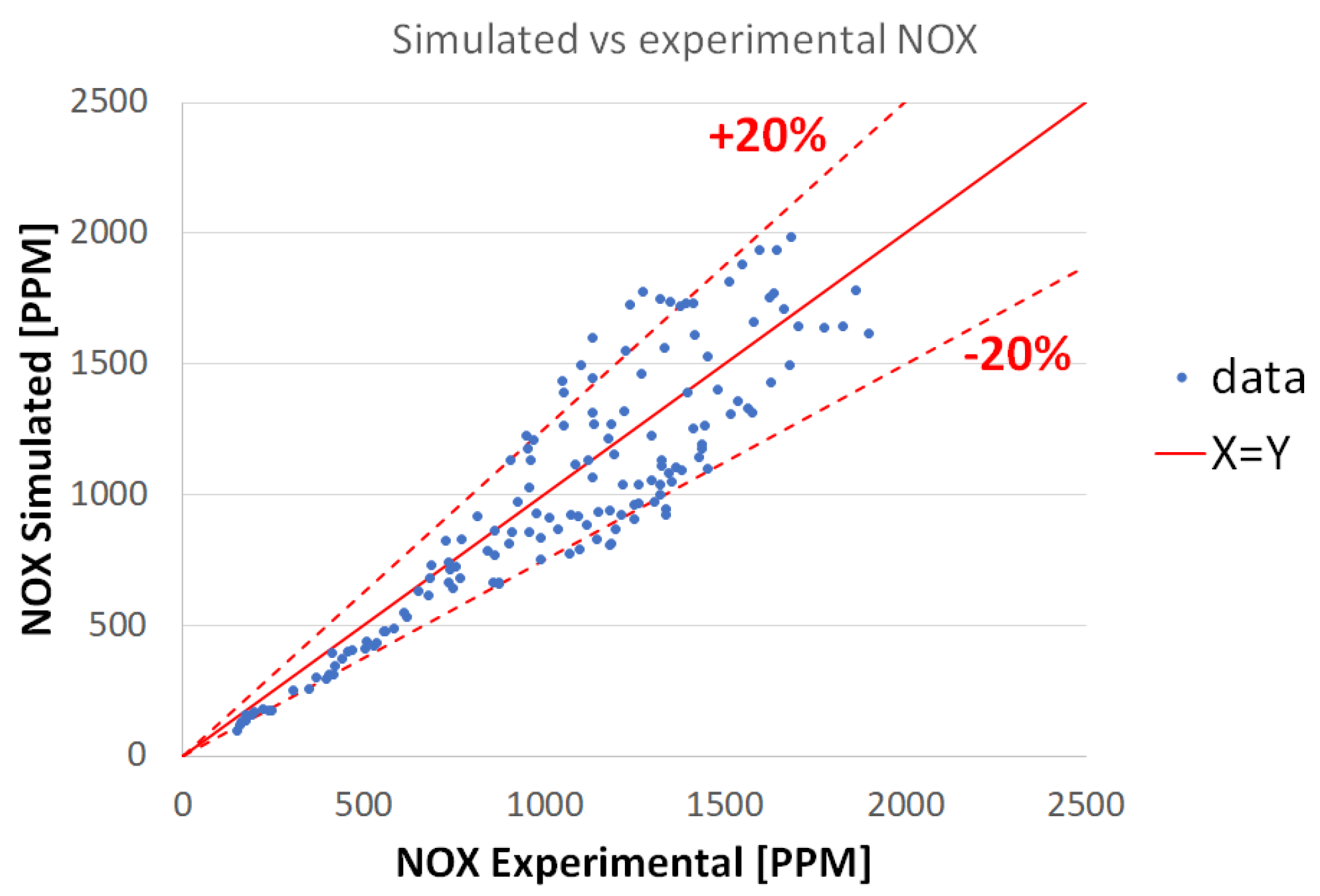


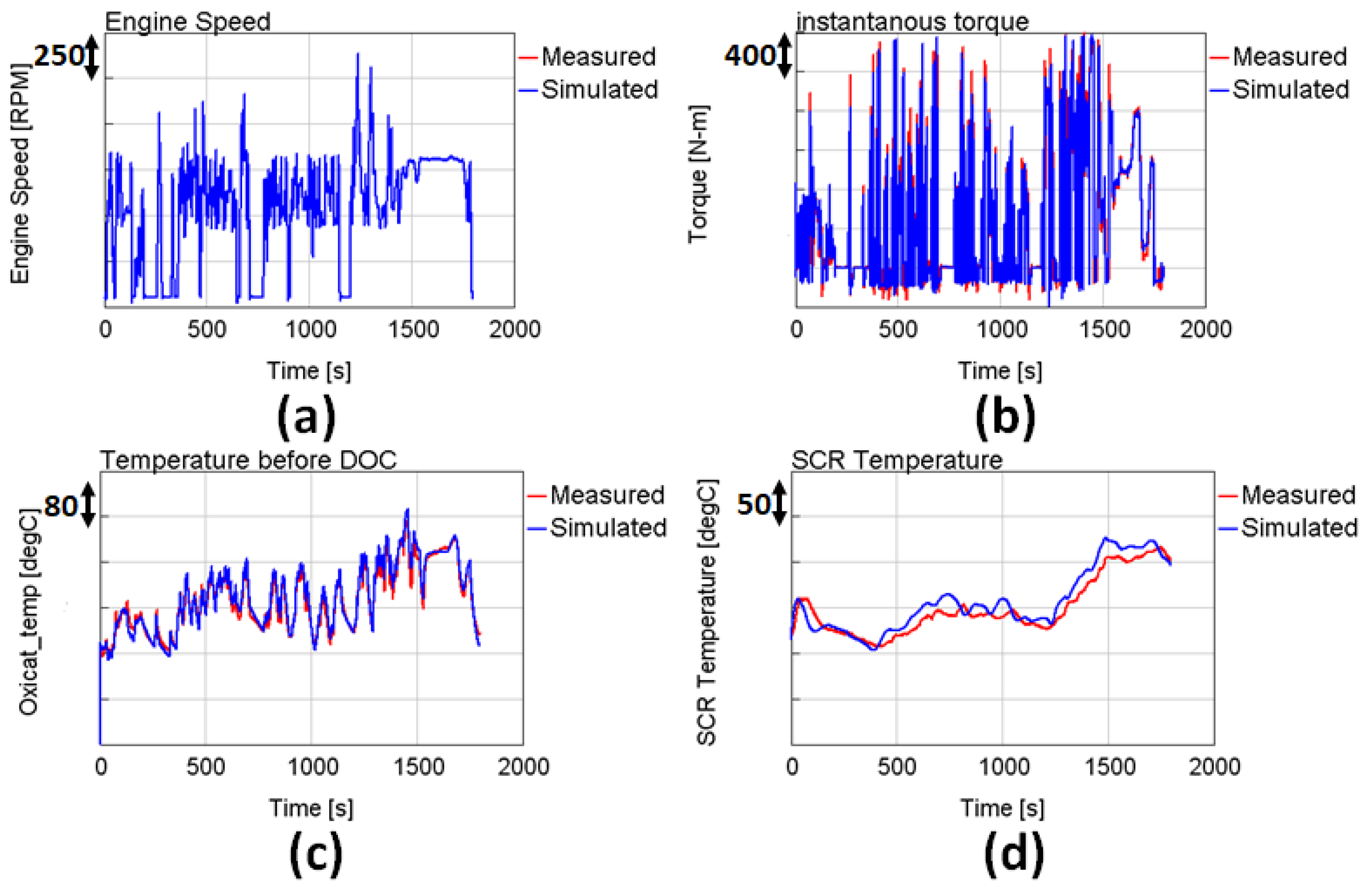
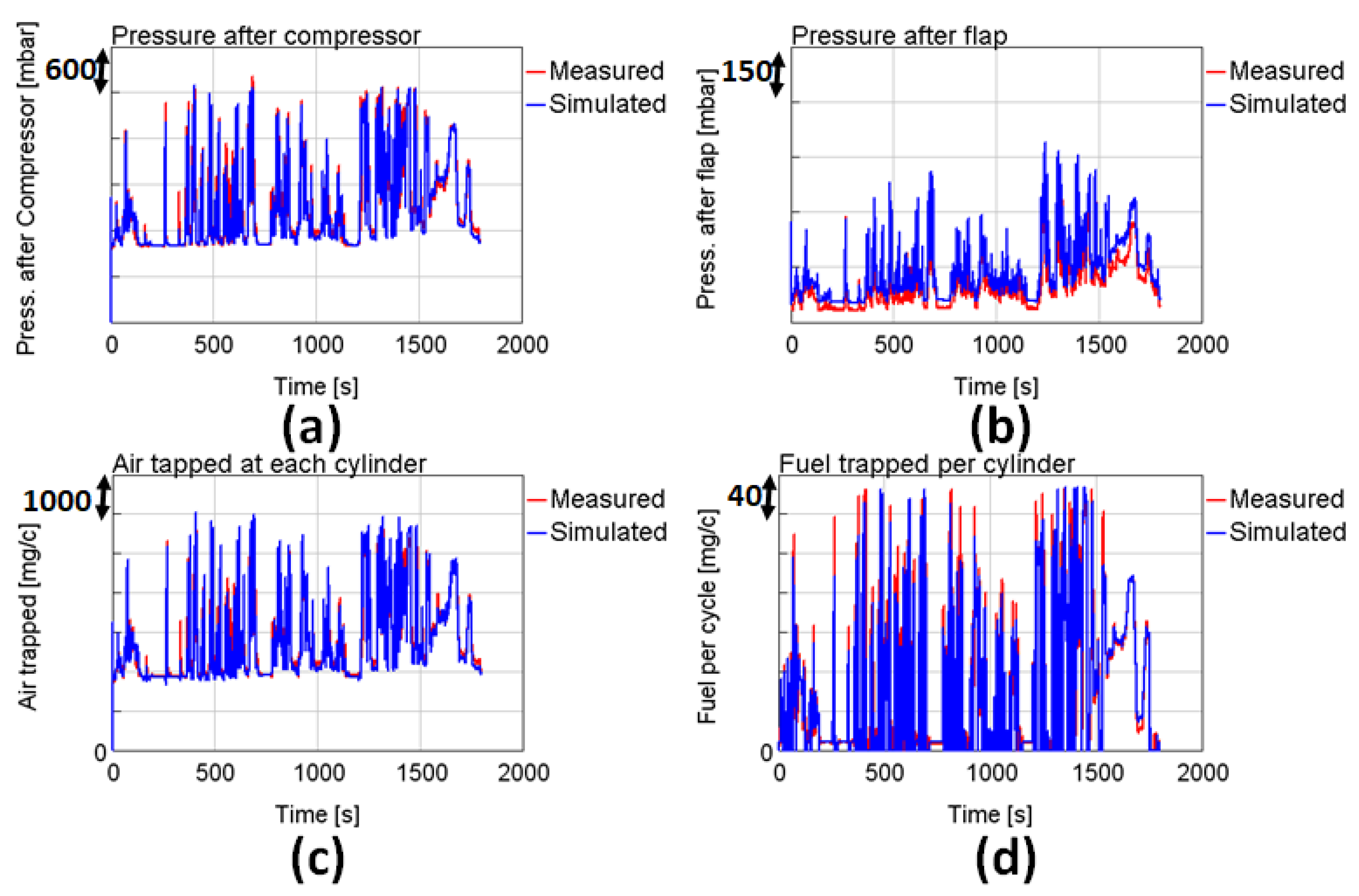
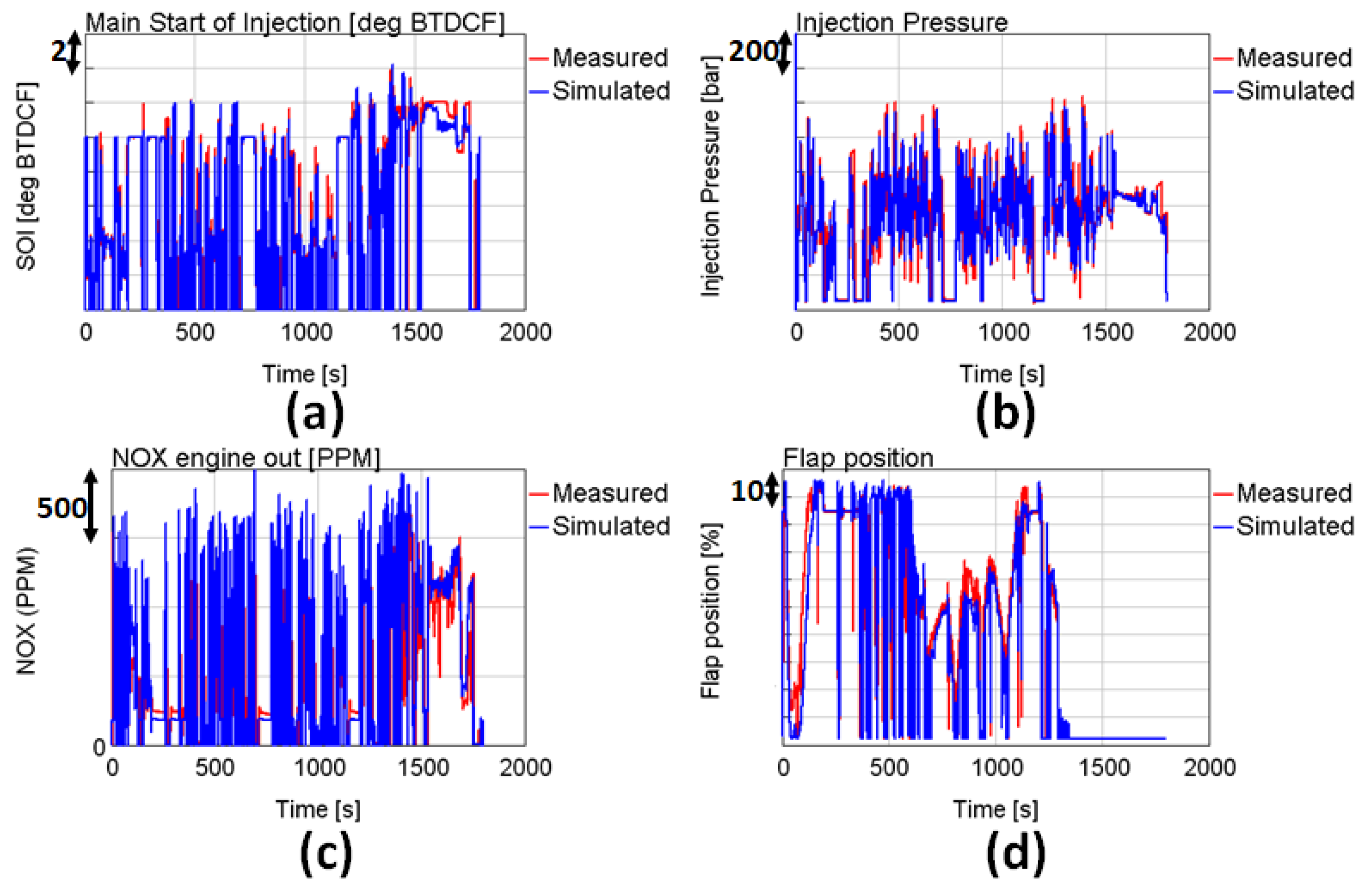
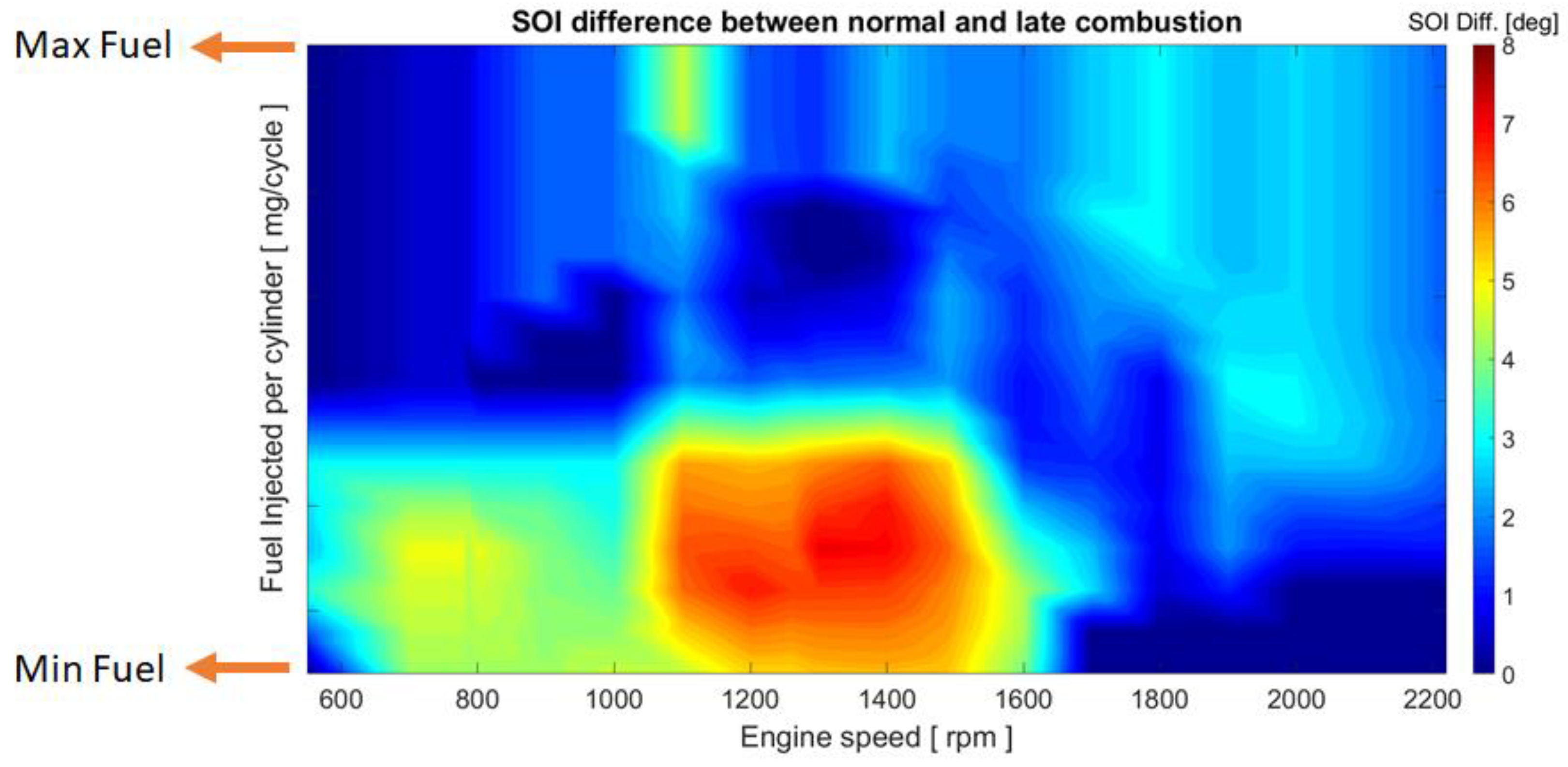
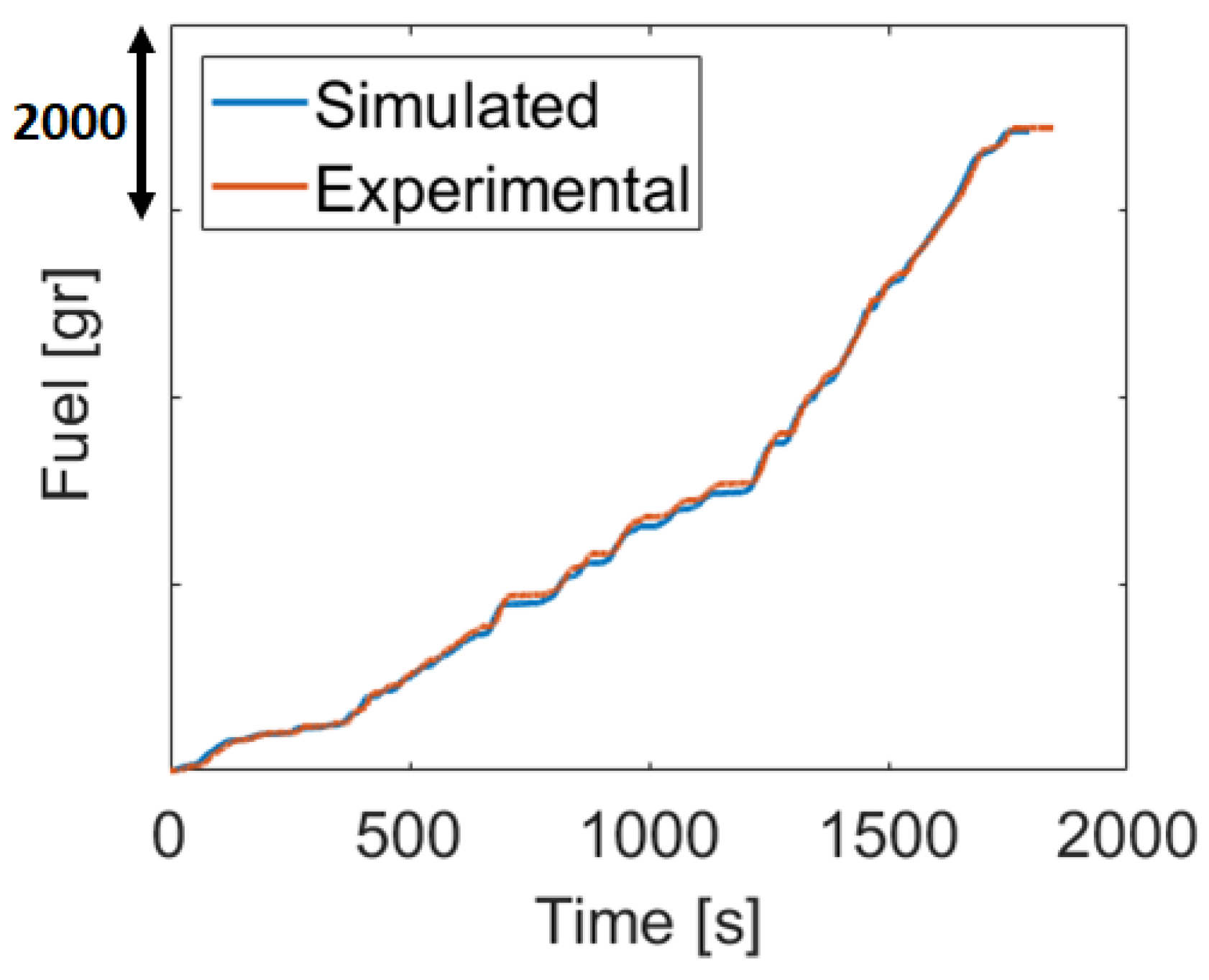
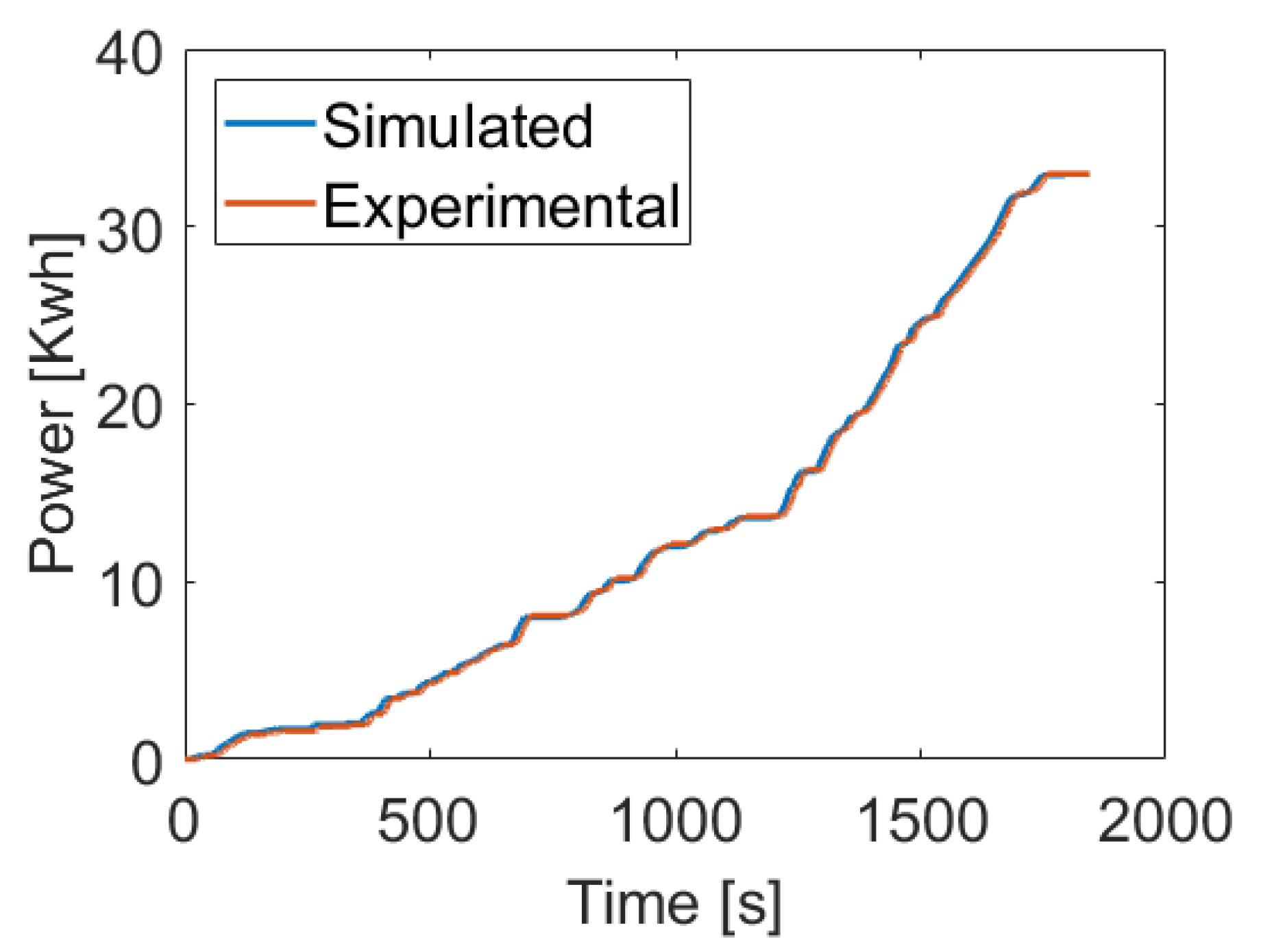

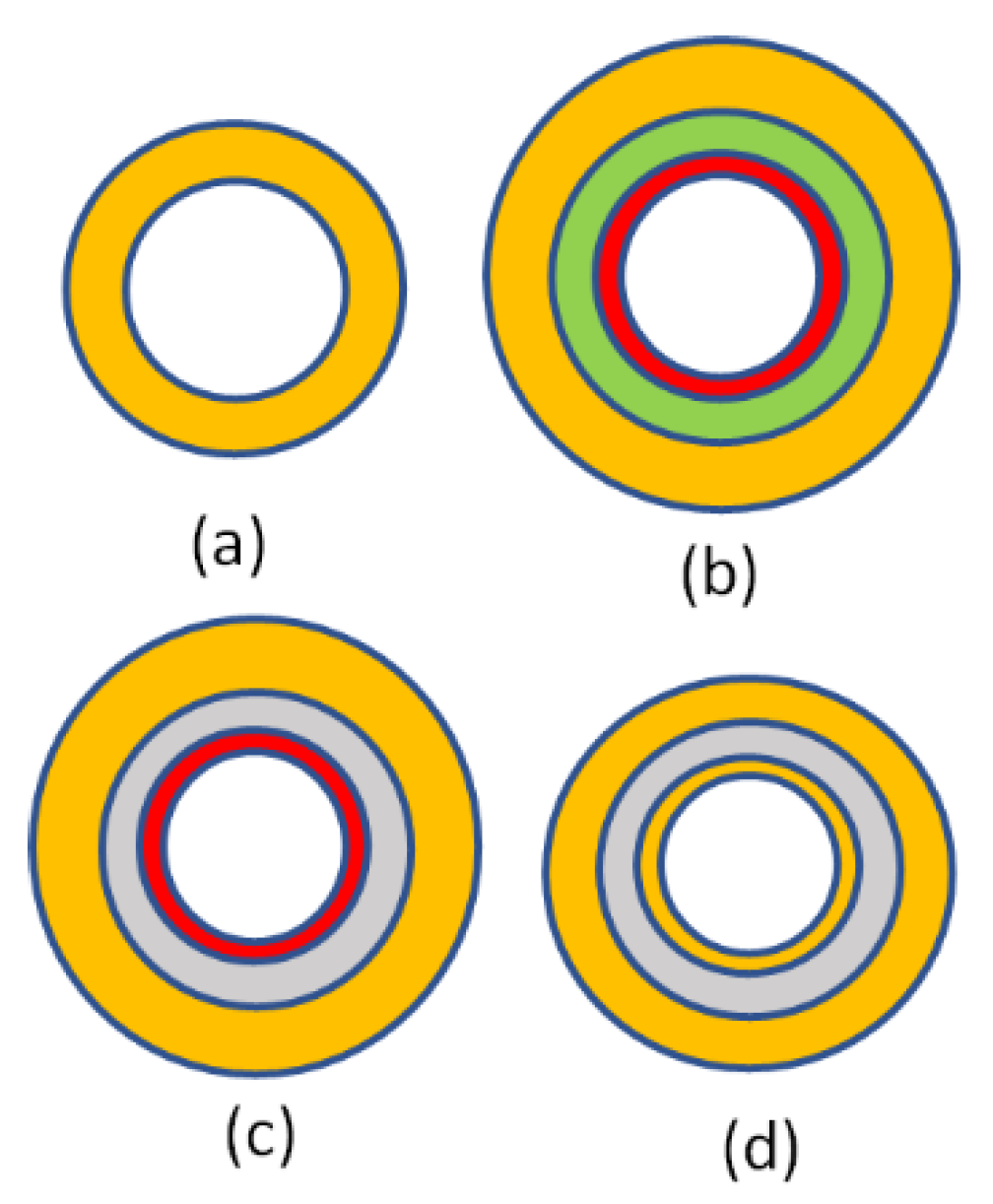

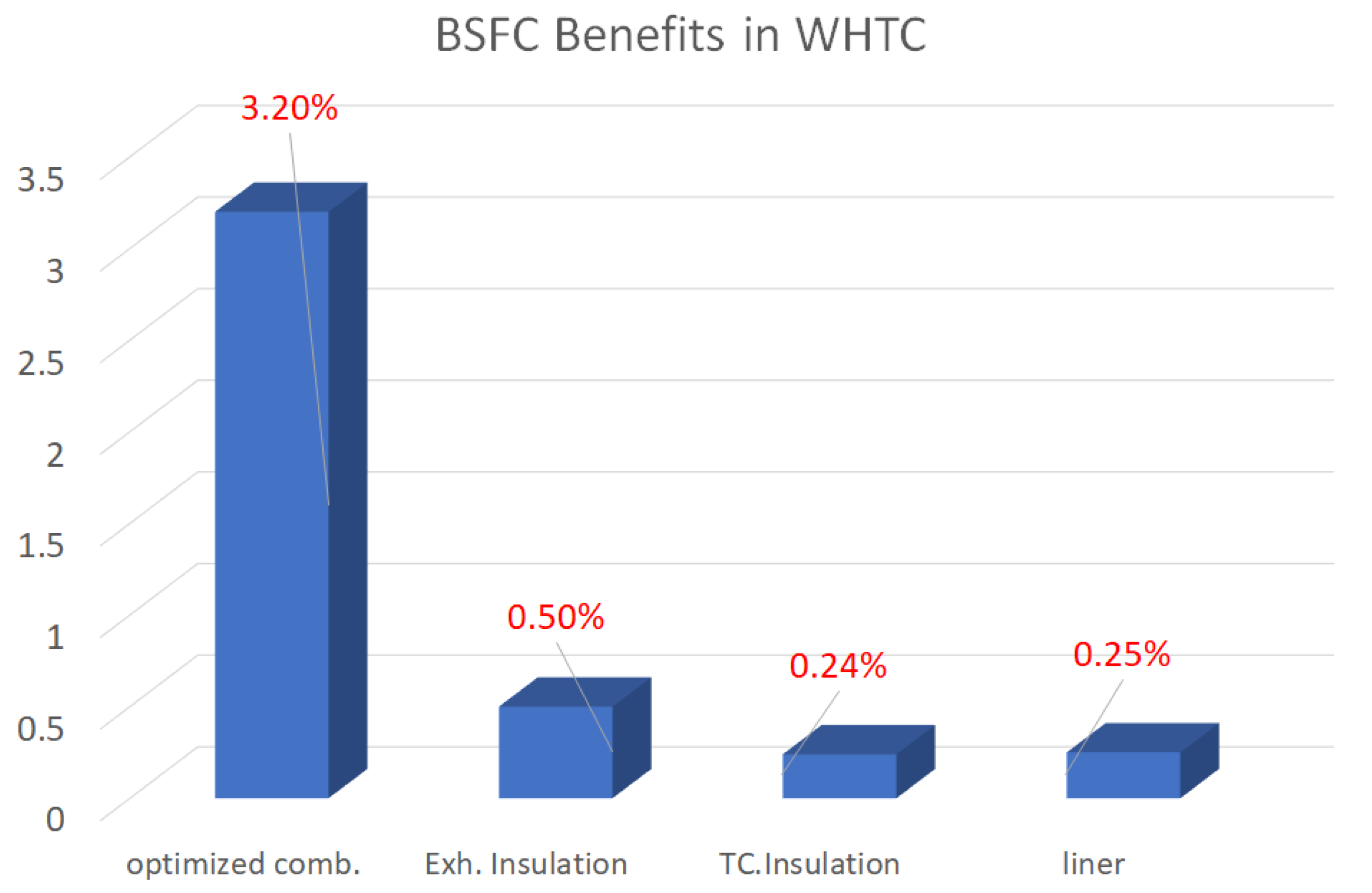
| Engine Characteristics | |
|---|---|
| Bore | 128 |
| Stroke | 144 |
| N° cylinders | 6 |
| Displacement | 11 L |
| Peak Power | 370 kW @1900 rpm |
| Peak Torque | 2360 Nm @1000 rpm |
| Valvetrain | 4 valves per cylinder |
| Calibration Parameters | Value |
|---|---|
| ERM | 1.86 |
| IDM | 0.35 |
| PCRM | 0.85 |
| DCRM | 0.65 |
Publisher’s Note: MDPI stays neutral with regard to jurisdictional claims in published maps and institutional affiliations. |
© 2021 by the authors. Licensee MDPI, Basel, Switzerland. This article is an open access article distributed under the terms and conditions of the Creative Commons Attribution (CC BY) license (http://creativecommons.org/licenses/by/4.0/).
Share and Cite
Mirzaeian, M.; Langridge, S. Creating a Virtual Test Bed Using a Dynamic Engine Model with Integrated Controls to Support in-the-Loop Hardware and Software Optimization and Calibration. Energies 2021, 14, 652. https://doi.org/10.3390/en14030652
Mirzaeian M, Langridge S. Creating a Virtual Test Bed Using a Dynamic Engine Model with Integrated Controls to Support in-the-Loop Hardware and Software Optimization and Calibration. Energies. 2021; 14(3):652. https://doi.org/10.3390/en14030652
Chicago/Turabian StyleMirzaeian, Mohsen, and Simon Langridge. 2021. "Creating a Virtual Test Bed Using a Dynamic Engine Model with Integrated Controls to Support in-the-Loop Hardware and Software Optimization and Calibration" Energies 14, no. 3: 652. https://doi.org/10.3390/en14030652






